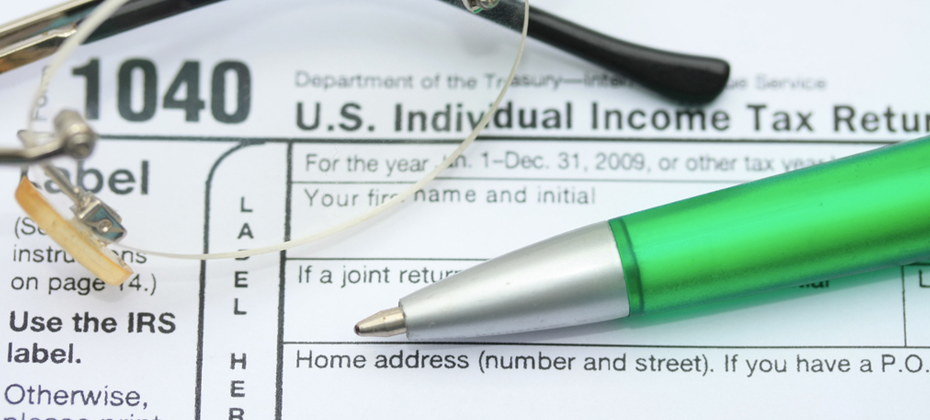Latest Posts

For marketers, the start of a new year is an opportunity to look ahead.

Attract and retain high-value demand deposit accounts The excitement of the new year has ended, and now the big question remains: What will 2016 hold for our market and the economy? So far, we’ve seen this election year bring a volatile financial market: The Federal Reserve increased short-term interest rates by 25 basis in December, and there is uncertainty if and when future increases will come China’s gross domestic product is forecasted at 6.5 percent, the lowest in a quarter century The Dow Jones industrial average is down 10 percent to start the year, signaling a lot of uncertainty for banks and consumers It’s hard to find answers in a shifting financial landscape with a long list of mixed signals. The average consumer is looking on and wondering if we face another Great Recession or if the current economy is spiking a fever just before it is completely cured. The reality, for those of us in the banking industry, is that the modest economic recovery is likely to continue as part of a new normal pattern. In 2016, banks that remain competitive in a more digital world will be those that have frictionless products and processes to attract and retain high-value, highly sought-after consumer deposits and loans. Banks should expect the competition for deposits to intensify, and they will need to ensure that new deposit customers are on boarded effectively and cross-sold loan products quickly to reduce first-year attrition. Cross-selling at the point of origination for the demand deposit account (DDA) customers is the best way to ensure that new customers keep the institution as their primary bank. Financial institutions can exceed consumer expectations and ensure a competitive business model by leveraging modernized technology capabilities fully in combination with making relevant decisions to deliver consumer-friendly experiences. First-year DDA attrition rates will demonstrate how the consumer’s expectations were met and if the new bank got the account-opening process right or wrong. Experian® suggests three capabilities clients should consider: A deposits technology platform that offers frictionless change to data, origination strategies and instant cross-sell to loan products that yield sticky customers Strategies that comply with current and evolving regulatory demands, such as those being sought by the Consumer Financial Protection Bureau (CFPB) Business planning to identify execution gaps and a road map to ensure that gaps are addressed, confirming continued competitive ability to attract high-value deposit and loan customers DDA-account opening effectiveness can be achieved by using a consumer’s life stage, affordability considerations, unique risk profile and financial needs to on board optimally and grow those high-value consumers effectively and efficiently. Financial institutions that are nimble and fast adopters of these critical capabilities will reduce operating expenses for their organizations, grow sustainable revenue from new prospects and customers, and delight those new customers along the way. This is a win-win for banks and consumers. Join me next week as we discuss best practices across the entire demand deposit account life cycle.

As millennials continue to experience challenges in obtaining credit, Experian’s latest research finds that this population is very receptive to nonbank lenders for the ease, speed and accessibility they provide.

The world of online marketplace lending has grown tremendously over the past several years. Still, for as much hype as it has received, it’s important to note the sector represents only 1.1 percent of unsecured loans and 2.5 percent of small business loans in the United States. While the industry is still in its infancy, it's expected to grow at an annual rate of 47 percent in the U.S by 2020, according to Morgan Stanley. And as it transitions from its “start-up” phase into “adolescence,” many expect it will become a high-growth, mature and stable market, bringing great benefit to consumers of financial services. So what does the future hold for online marketplace lenders? Who better to weigh in than those in the space, going through the evolution, seeing challenges first-hand and keeping a pulse on where they need to invest in order to survive. This video features a diverse group of leaders in the online marketplace lending industry. // Peter Renton, Founder, Lend Academy Scott Sanborn, COO, Lending Club Sam Hodges, Co-founder, Funding Circle USA Andrew Smith, Partner, Covington & Burling Joseph DePaulo, CEO, College Ave. Kathryn Ebner, VP, Credibly Without stealing all of their thunder, a few key themes emerged for 2016. Online marketplace lenders will look to expand their product offerings into all credit verticals – personal loans, auto, student, small business and beyond. Expect competition to continue to heat up. Large institutional investors will increasingly back and test the space. Some players will partner with large banks. Many will explore scoring with the use of alternative data. Innovations to come in customer service and product expansion. Bottom line, alternative finance doesn’t seem so “alternative” anymore. As such, competition will heat up, and regulators will continue to keep an eye on business practices, processes and what it all means for consumers. To learn more about online marketplace lending, visit https://www.experian.com/business-services/landing/marketplace-lending.html

It may seem like April is far away, but tax season in fact launches next Tuesday, January 19. And whether you’re a business or an individual, you’ll want to know if you’re eligible for any tax benefits. Thanks to a recent announcement from the Internal Revenue Service (IRS), identity theft protection will now be considered a non-taxable benefit – a nod to the rising importance of the service for all consumers in today’s security landscape. The IRS will treat identity theft protection as a non-taxable, non-reportable benefit—for any employee or company, regardless of whether they’ve experienced a data breach, or whether the identity theft protection is provided by an employer to employees or by a business to its customers. Previously, only employees or customers who were in the aftermath of a data breach could treat identity theft monitoring as a non-taxable event. But after that announcement just four months ago, several businesses suggested a data breach was not a remote risk, but rather, “inevitable.” What does this mean for companies? They can now deduct any cost of offering identity theft protection to their employees or customers. The IRS defines identity theft protection services as: Credit report and monitoring services Identity theft insurance policies Identity restoration services Other similar services It’s important to note that these don’t need to be reported on either W-2 or 1099-MISC forms. However, this new policy won’t apply to cash given to employees or customers in place of identity protection services. Perhaps the change in defining what qualifies was spurred by the IRS’s need to provide identity theft protection last summer, as its online database of past-filed returns and other documents was hacked. That breach affected over 300,000 individuals. Whatever the reason, the announcement means this is a perfect time to sign up for identity theft monitoring services. You can do so through an employer or directly with a retailer. Particularly for individuals, the ability to receive tax benefits while knowing your personally identifiable information is safe and secure is a great feeling. For existing subscribers, upgrading to premium services may now be a more viable option. Does your company offer identity theft protection and monitoring as an employee benefit? If not, would this announcement change their minds? Visit our website for more information on identity protection products you can offer your customers. Learn more

The new year has started, the champagne bottles recycled. Bye-bye holidays, hello tax season. In fact, many individuals who are expecting tax refunds are filing early to capture those refunds as soon as possible. After all, a refund equates to so many possibilities – paying down debt, starting a much-needed home improvement project or perhaps trading up for a new vehicle. So what does that mean for lenders? As consumers pocket tax refunds, the likelihood of their ability to make payments increases. By the end of February 2014, more than 48 million tax refunds had been issued according to the IRS – an increase of 5.6 percent compared to the same time the previous year. As of Feb. 28, the average refund in 2014 was $3,034, up 3 percent compared to the average refund amount for the same time in 2013. To capitalize on this time period, introducing collection triggers can assist lenders with how to manage and collect within their portfolios. Aggressively paying down a bankcard, doubling down on a mortgage payment or wiping out a HELOC signal to the lender a change in positive behavior, but without a trigger attached, it can be hard to pinpoint which customers are shifting from their status quo payments. Experian actually offers around 100 collection triggers, but lenders do not need all to seek out the predictive insights they require. A “top 20” list has been created, featuring the highest percentages in lift rates, and population hit rates. Experian has done extensive analysis to determine the top-performing collection triggers. Among the top 15 to 20 triggers, the trigger hit rate ranged from 2 to 8 percent on an average client’s total portfolio, taking into consideration liquidation rates, average percent of payment lifts, lift in liquidation rates over the baseline liquidation, percent of overall portfolio that triggered, percent of overall portfolio that triggered only on the top-selected triggers, and percent of volume by trigger on the total customers that had a trigger hit. With that said, it is essential to implement the right strategy that includes a good mixture of the top-performing triggers. The key is diversifying and balancing trigger selection and setting triggers up during opportune times. Tax season is one of those times. Some of the top-ranked triggers include: Closed-Zero Balance Triggers: This is when a consumer’s account is reported as closed after being delinquent for a certain number of days. Specifically, the closed-zero balance trigger after being delinquent for 120 days has the highest percent of payment lift over an average payment that you would receive from a customer (at a 710 percent lift rate). These triggers are good indicators the consumer is showing positive improvement, thus having a higher likelihood for collections. Paid Triggers: This is when a consumer’s account is reported as paid after being delinquent, in collections, etc. Five of the top 20 triggers are paid triggers. These triggers have good coverage and a good balance between high lift rates (100 percent to 500 percent) and percent of the triggered population. These triggers are also good indicators the consumer is showing positive improvement, thus having a higher likelihood for collections. Inquiry Triggers: This is when a consumer is applying for an auto loan, mortgage loan, etc. The lift rates for these triggers are lowest within the Top 20, but on the other hand, these triggers have the highest hit rates (up to a 33 percent hit rate). These triggers are good indicators consumers are seeking to open additional lines of credit. Home Equity Loan Triggers: These triggers indicate the credit available on a consumer’s home equity loan. They are specifically enticing to collectors due to the fact that home equity lines of credit are usually larger than your average credit on your bank card. The larger the line of credit, the more you are able to potentially collect. To learn more about collection triggers, visit https://www.experian.com/consumer-information/debt-collection.html

Looking at true fraud rate I’ve talked with many companies over the years about their fraud problems. Most have a genuine desire to operate under the fraud prevention model and eliminate all possible fraud from their systems. The impact on profit is often the primary motivation for implementing solutions, but in reality most companies employ a fraud management schema, offsetting the cost of fraud with the cost of managing it. There are numerous write-ups and studies on the true cost of fraud. What most people don’t realize is that, for each item lost to fraud, a business operating on 10 percent net profit margins will need to sell 10 times the amount of product in order to recover the expense associated with the loss. These hard costs don’t include the soft dollar costs, such as increased call center expenses to handle customer calls. Recently, some organizations have started to add reputational risk into their cost-of-fraud equation. With the proliferation of social media, a few unhappy customers who have been victims of fraud easily can impact an organization’s reputation. This is an emerging fuzzy cost that eventually can be tied back to lost revenue or a drop in share price. Most companies say with pride that their acceptable fraud rate is zero. But when it comes time to choose a partner in fraud detection, it almost always comes down to return on investment. How much fraud can be stopped — and at what price? More informed organizations take all operational expenses and metrics into consideration, but many look at vendor price as the only cost. It’s at this point that they start to increase their acceptable fraud rate. In other words, if — hypothetically — Vendor A can stop only 80 percent of the fraud compared with Vendor B, but Vendor A costs less than 80 percent of what Vendor B costs, they’ll choose Vendor A. All of a sudden, their acceptable fraud rate is no longer zero. This method of decision making is like saying we’ll turn off the security cameras for 20 percent of the day because we can save money on electricity. On the surface, I understand. You have to be accountable to the shareholders. You have to spend and invest responsibly. Everyone is under pressure to perform financially. How many executives, however, take the time to see where those lost dollars end up? If they knew where the money went, would they change their view? We must be vigilant and keep our acceptable fraud rate at zero.

Consumer credit card debt reached $650 billion in Q3 2015 — the highest level since Q4 2009.

As thought leaders in every industry make predictions for what 2016 will bring, I’m guessing there will be a few constants. New couples will marry. Some couples, sadly, will divorce. Young and old will move – some into first homes – others downsizing or making moves cross-country for work. And waves of individuals will clamor to the latest devices – a new iPhone7, perhaps. The Apple rumors are already flying. Yes, no big surprises, right? But, do you know what all of these very standard life events have in common? These transitions often result in shifts in consumer data, sometimes making people more difficult to track and contact. New last names, new addresses, new phone numbers. Suddenly, the consumer data that companies and lenders have on file are dated, and when it comes time to reach out to these individuals, it’s a challenge to connect. But that is just the beginning. The Federal Communications Commission (FCC) is increasing its efforts to register consumer complaints and taking aggressive actions to stop companies from making unsolicited phone calls. And the penalties are steep. Fines per individual infraction can be anywhere from $500 to $1,500. Companies have been delivered hefty penalties in the thousands, and in some cases millions, of dollars, over the past few years. All have questions and are seeking to understand how they must adjust their policies and call practices. Now those multiple attempts to call and find a consumer can cost you – big time. No more “shotgun” approaches to identifying and using phones. It’s simply too risky. The Telephone Consumer Protection Act (TCPA), enforced by the FCC, has been around since 1991, but regulations have been closely scrutinized over the past year since the FCC announced a new ruling last summer to clarify hot topics. In their July paper, they aim to communicate the definition of an “auto-dialer,” consent-to-call rules, how to address the reassignment of cell phone numbers, and the new requirement for “one call” without liability. In short, the Declaratory Ruling has opened the door to even greater liability under the TCPA, leaving companies who place outbound customer calls at-risk for compliance violations. Some are projecting the TCPA rules will continue to become even more expansive in 2016, so companies must really assess their call strategies and put best practices in place to increase right-party contact rates. Suggestions include: Identify landline and cell phones for TCPA compliance with dialer campaigns Focus on right- and wrong-party contact to improve customer service Score phones or apply cut-off scores based on the confidence of the number or match Scrub often for updated or verified information Establish a process to identify ported phones Determine when and how often you dial cell phones Provide consumers user-friendly mechanisms– such as texting “STOP” or “UNSUBSCRIBE” – to opt-out of receiving TCPA-covered communications. Review the policies and practices of third-party vendors to ensure they are not sending communications violating the TCPA With the huge advancements in mobile technology and the ever-changing digital landscape, it’s challenging to keep up, but regulators are cracking down on violations, and a slew of lawyers are ready to file on behalf of unhappy consumers dialed one-too-many times. Beyond a best-practice review, tools and systems are available to identify the right number for those moving and changing consumers. And I’m sure we can all agree, those life events will continue to happen in 2016. Marriages, divorces, moves, new devices. They’re coming. As a result, it’s necessary to track the resulting changes to consumer data. Only then will you have a shot at avoiding negative customer experiences and fines.

As 2016 approaches, many people have identified their New Year’s resolutions, but the majority fail to stick to these resolutions. While 45% of people make resolutions, only 8% are successful in achieving their goals. The most common resolution types:* To increase the likelihood of keeping resolutions, experts recommend setting small, attainable goals and regularly tracking progress. *Total is higher than 100% because of multiple resolutions >> New Year's Resolution Statistics

According to PlayNetwork.com, for the first time in two decades Mariah Carey’s “All I Want For Christmas Is You” is no longer the most-played holiday song in retail stores. The list of top songs includes: Rank Artist Title 1 The Shins Wonderful Christmastime 2 Mariah Carey All I Want For Christmas Is You 3 Christina Aguilera Christmas Time 4 Waitresses Christmas Wrapping 5 Jack Johnson Someday At Christmas 6 Kelly Clarkson Underneath the Tree 7 Michael Buble A Holly Jolly Christmas 8 Bing Crosby White Chistmas 9 Train What Christmas Means To Me 10 Ella Fitzgerald Have Yourself A Merry Little Christmas >> Top 20 Songs Heard by Holiday Shoppers

Payments and the Internet of things has been colliding for a while now – and it surfaced again recently with Mastercard announcing that it is working with an array of partners including Capital One to launch payments in connected devices. The thinking here seems to be that payments is a function in the Marlow’s pyramid of needs for any new consumer device. I am conflicted on this point – not that I don’t believe the Internet of Things isn’t important, but that we may be overthinking in how payments is important to be shoved inside everything that has a radio baked in. And not everything will have a radio in the future, and the role of a smartphone as the center of the connected device commerce universe isn’t going away. It is important to keep perspective here – as this announcement is less about coat sleeves hiding NFC chips with tokenized credit cards – rather it’s the commerce enablement of devices that we may carry on our person so that they can be armed for payment. Though I may disagree on whether a coat sleeve or jewelry are essential end-points in commerce, a platform of capabilities to challenge, authenticate and verify, and ultimately trust and provision a tokenized representation of something, whether its a card or a fragment of a consumer's identity, to a device that itself represents a collection of radios and sensors is very exciting. It is exciting because as device counts and assortments grow, they each have their own residual identity as a combination of things and behaviors that are either deterministic or probabilistic. The biggest shift we will see is that the collective device identities can be a far better and complete representation of customer identity that the latter will be replaced by the former. Name-centric identities will give away to algorithmically arrived ones. As Dan Geer puts it, no longer will I need to announce that I am Cherian, but my collection of devices will indeed do so on my behalf, perhaps in consultation with each other. More over, none of these devices need to replicate my identity in order to be trusted and tethered, either. Coming back to Payments, today my Fitbit’s claim to make a successful payment is validated way before the transaction, when I authorized provisioning by authenticating through a bank app or wallet. What would be interesting is when the reverse becomes true – when these class of devices that I own can together or separately vouch for my identity. We may forget usernames and passwords, fingerprints may prove to be irrevocable and rigid, but we will always be surrounded by a fog of devices that each carry a cryptographically unique and verifiable signature. And it will be up to the smartphone, its ecosystem and the devices that operate in its periphery to individually negotiate and establish trust among each of them. So this is why I believe the MasterCard effort in tokenizing devices is important when you view it in conjunction with the recent launch of SwiftID from CapitalOne. Payments getting shoved in to everyday things like wearables, disguises the more important effort of becoming a beachhead in establishing trust between devices, by using tokenization as the method of delivery. As you may have gathered by now, I am less excited of pushing cards in to devices (least of all – cars!) and more about how a trusted framework to carve out a tamper proof and secure cache within an untrusted device, along with the process to securely provision a token or a signed hash representing something of value, can serve as the foundation for future device – and by extension – user identity. On a side note, here’s a bit about pushing cards in to cars, and mistaking them for connected cars. To me there are only two connected car classes today. One is Tesla where each car on the road is part of the whole, each learning separately and together as they examine, encounter and learn the world around them to maneuver safely. The other is a button in an app that I hit to have a car magically appear in front of me. Other than Tesla and Uber, there are no other commercial instances of a connected car that appeals (Google has no cars you can buy, yet).

Millennials, now the largest generation in the United States, are taking longer to establish credit than earlier generations of young people.

The numbers are staggering: more than $1.2 trillion in outstanding student loan debt, 40 million borrowers, and an average balance of $29,000. With Millennials exiting college and buried in debt, it’s no surprise they are postponing marriage, having babies, home purchases and other major life events. While the student loan issue has been looming for years, the magnitude is now taking center stage. All of the 2016 presidential contenders have an opinion, and many are starting to propose solutions – some going as far as to call for “debt-free college.” The issue has also caught the eye of the Consumer Financial Protection Bureau (CFPB). In its 2014 report, the CFPB stated one in four recent college graduates is either unemployed or underemployed. They also stated when faced with the inability to repay their debt, students lack payment options and are unclear as to how to resolve their debt. There is a bright spot. Experian reported new findings stating that among adults 18 to 34 years of age, the average credit score of those who had at least one open student loan account was 640, 20 points higher than others in their age group. So, if paid in a timely manner, student loans can help younger people establish a decent credit history before they go on to buy things like homes and cars. Still, education is key. Today, only 24 U.S. states require some form of financial literacy to be included in their high school course work, with only four states (Utah, Montana, Tennessee and Virginia) devoting a full semester to a personal finance course. Education is needed before students start diving into the student loan scene, and also after they graduate, to ensure they understand their repayment options and obligations. The CFPB is calling on all parties (universities, colleges, private lenders, advocates, policy makers and even family members) to get involved. Providing financial education, financial literacy, repayment options, deferral methods and income calculators are all needed to tackle this growing problem. The Great Recession and slow recovery brought home the importance of a college degree in today’s economy for many Americans. Bachelor’s degree recipients fared much better than their counterparts who only finished high school. The question becomes how to fund it, and make sure students who rely on loans understand the finances attached to this milestone investment. Learn more about Experian’s student debt trends and credit education in The Increasing Need for Consumer Credit Education: A Review of Student Debt.

Leveraging customer intelligence in the age of mass data compromise Hardly a week goes by without the media reporting a large-scale hack of sensitive personal or account information. Increasingly, the public seems resigned to believe that such compromises are the new normal, producing a kind of breach fatigue that may be lowering the expectations consumers have for identity and online security. Still, businesses must be vigilant and continue to apply comprehensive, data-driven intelligence that helps to thwart both breaches and the malicious use of breached information and to protect all parties’ interests. We recently released a new white paper, Data confidence realized: Leveraging customer intelligence in the age of mass data compromise, to help businesses understand how data and technology are needed to strengthen fraud risk strategies through comprehensive customer intelligence. At its core, reliable customer intelligence is based on high-quality contextual identity and device attributes and other authentication performance data. Customer intelligence provides a holistic, bound-together view of devices and identities that equips companies and agencies with the tools to balance cost and risk without increasing transactional friction and affecting the customer experience. In the age of mass data compromise, however, obtaining dependable information continues to challenge many companies, usually because consumer-provided identities aren’t always unique enough to produce fully confident decisioning. For more information, and to get a better sense of what steps you need to take now, download the full white paper.